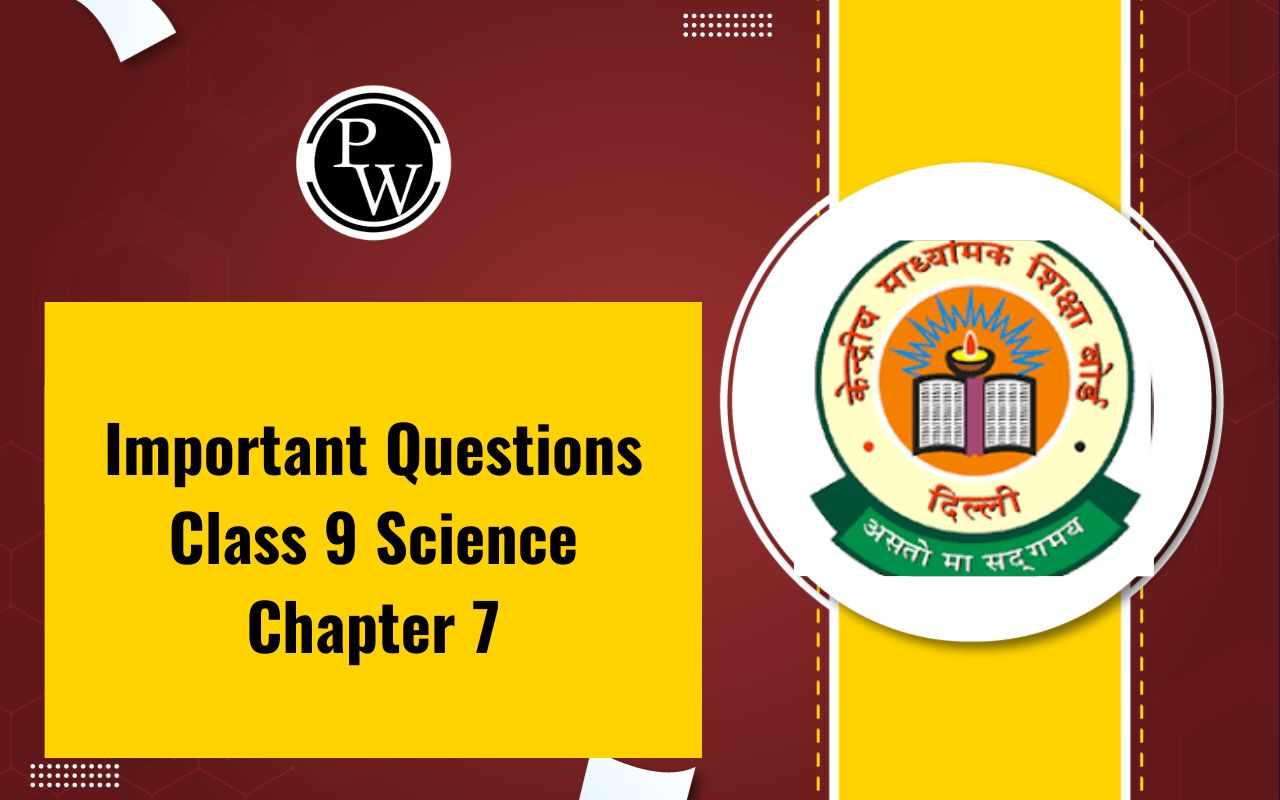

CBSE Important Questions for Class 9 Social Science Geography Chapter 4: Chapter 4 of Class 9 CBSE Social Science Geography, Climate, focuses on India's climate, factors influencing it, monsoon characteristics, and its impact on agriculture and daily life. Important topics include climatic controls, factors affecting India's climate (latitude, altitude, pressure, and wind systems), and the mechanism of the monsoon.
Students should understand the onset, advance, and retreat of monsoons, as well as regional variations in climate. Key questions often cover the monsoon’s role in the Indian economy, seasonal changes, and the impact of El Niño. Analyzing maps and case studies related to climatic regions is also essential for exams.
CBSE Important Questions for Class 9 Social Science Geography Chapter 4 Overview
Chapter 4 of Class 9 CBSE Social Science Geography, Climate, is crucial for understanding India's climatic patterns and their impact on life and economy. It covers climatic controls, monsoon mechanisms, and factors affecting India’s climate, such as latitude, altitude, and wind systems.
The monsoon’s onset, advance, and retreat are essential topics, along with their influence on agriculture, water resources, and livelihoods. Understanding these concepts helps students analyze weather patterns, predict climate changes, and appreciate India’s geographical diversity. Important questions often focus on monsoon characteristics, seasonal variations, and the effects of El Niño, making this chapter vital for exams and real-life applications.
CBSE Important Questions for Class 9 Social Science Geography Chapter 4 PDF
Chapter 4 of Class 9 CBSE Social Science Geography, Climate, is essential for understanding India's climate, monsoon patterns, and their impact on agriculture and daily life. Key topics include climatic controls, monsoon mechanisms, and seasonal variations. Below, we have provided a PDF containing important questions from this chapter, which will help students prepare effectively for exams. These questions cover crucial concepts, ensuring a thorough understanding of the topic.
CBSE Important Questions for Class 9 Social Science Geography Chapter 4 PDF
CBSE Important Questions for Class 9 Social Science Geography Chapter 4 Climate
1. Which one of the following is not the major control of the climate of any place?
(A) Latitude
(B) Altitude
(C) Ocean currents
(D) Longitude
Ans. (D) Longitude
2. A striking feature of the hot weather season in north India
(A) Kal Baisakhi
(B) Loo
(C) Mango shower
(D) Chillai kalan
Ans. (B) Loo
3. The climate of the equatorial region is characterized by:
(A) Extreme hot and dry weather
(B) Uniform temperature and heavy rainfall
(C) Extremely cold weather with snowfall
(D) Low temperature and low humidity
Ans. (B) Uniform temperature and heavy rainfall
4. The wind system that brings rainfall to the Indian subcontinent during the summer season is called:
(A) South-West Monsoon
(B) North-East Monsoon
(C) Trade Winds
(D) Westerlies
Ans. (A) South-West Monsoon
5. Which of the following regions experiences the Mediterranean type of climate?
(A) Amazon Basin (B) Sahara Desert
(C) Coastal California (D) Siberian Tundra
Ans. (C) Coastal California
6. The term 'El Niño' is associated with:
(A) Extreme cold waves in Europe
(B) Heavy rainfall in the Indian subcontinent
(C) Warm ocean currents off the coast of South
America
(D) Typhoons in the Pacific Ocean
Ans. (C) Warm Ocean currents off the coast of South America
7. Which of the following statements about the monsoon is true?
(A) Monsoon winds blow from land to sea
(B) Monsoon winds bring dry weather to the
Indian subcontinent
(C) Monsoon winds are seasonal and reversible
(D) Monsoon winds affect only coastal regions
Ans. (C) Monsoon winds are seasonal and reversible
8. The 'Roaring Forties' refer to:
(A) A belt of calm winds around the equator
(B) Strong westerly winds found in the Southern
Hemisphere
(C) Tropical cyclones in the Indian Ocean
(D) Prevailing winds in the Arctic region
Ans. (B) Strong westerly winds found in the Southern Hemisphere
9. What is Advancing monsoon and occur in which period of the year?
Sol. The term "advancing monsoon" typically refers to the onset phase of the monsoon season in regions where monsoons occur.
Monsoon is a seasonal shift in the prevailing wind direction, which brings about a change in weather patterns, often characterized by heavy rainfall. It begins in late May or early June and continues through July.
10. Describe why monsoon acts as a unifying bond”. Explain.
Sol. The seasonal alteration of the wind systems and the associated weather conditions provide a rhythmic cycle of seasons.
Even the uncertainties of rain and uneven distribution are very much typical of the monsoons.The Indian landscape, its animal and plant life, its entire agricultural calendar and the life of the people, including their festivities, revolve around this phenomenon. Year after year, people of India from north to south and from east to west, eagerly await the arrival of the monsoon.
These monsoon winds bind the whole country by providing water to set the agricultural activities in motion. The river valleys which carry this water also unite as a single river valley unit.
11. Describe why monsoon acts as a unifying bond”.
Explain.
Sol. The seasonal alteration of the wind systems and the associated weather conditions provide a rhythmic cycle of seasons. Even the uncertainties of rain and uneven distribution are very much typical of the monsoons.
The Indian landscape, its animal and plant life, its entire agricultural calendar and the life of the people, including their festivities, revolve around this phenomenon. Year after year, people of India from north to south and from east to west, eagerly await the arrival of the monsoon.
These monsoon winds bind the whole country by providing water to set the agricultural activities in motion. The river valleys which carry this water also unite as a single river valley unit.
12. Distinguish between southwest monsoon and northeast monsoon.
Sol. Southwest Monsoon
(i) The summer period is marked by the southwest monsoons.
(ii) The southwest monsoon blows in a southwest direction to the mainland of India from June
to September.
(iii) It blows in India into two branches namely the Arabian Sea branch and Bay of Bengal
branch.
(iv) The southwest monsoon are warm winds.
Northeast Monsoon
(i) The winter period is marked by northeast monsoon.
(ii) The northwest monsoon blows in a north easterly direction across India from mid- November to February
(iii) It does not possess any branches.
(iv) These are cold winds
13. What is Advancing monsoon and occur in which period of the year?
Sol. The term "advancing monsoon" typically refers to the onset phase of the monsoon season in regions where monsoons occur. Monsoon is a seasonal shift in the prevailing wind direction, which brings about a change in weather patterns, often characterized by heavy rainfall. It begins in late May or early June and continues through July.
Benefits of Using CBSE Important Questions for Class 9 Social Science Geography Chapter 4
Studying important questions from Chapter 4 of Class 9 CBSE Social Science Geography, Climate, offers multiple benefits for students preparing for exams. These questions are designed to enhance understanding, improve retention, and boost confidence. Below are the key advantages of using these important questions:
1. Comprehensive Understanding of Key Concepts
-
Important questions cover crucial topics like climatic controls, monsoon mechanisms, factors affecting India’s climate, and seasonal variations.
-
They help students grasp the fundamental principles of climate and its role in shaping India's geography and economy.
2. Effective Exam Preparation
-
Practicing these questions ensures that students are well-prepared for different question formats, including short and long answers.
-
It helps them focus on high-scoring topics frequently asked in CBSE exams.
3. Improved Retention and Recall
-
Regular practice of important questions enhances memory retention, making it easier to recall concepts during exams.
-
Answering these questions repeatedly strengthens concept clarity and reduces the chances of forgetting information.
4. Enhanced Answer-Writing Skills
-
Practicing answers to important questions improves writing skills and helps students present their answers in a structured manner.
-
It ensures they learn how to include key points and explanations, which is crucial for scoring high marks.
CBSE Important Questions for Class 9 Social Science History Chapter 4 FAQs
What is climate?
What are the major climatic controls?
What is the monsoon?













